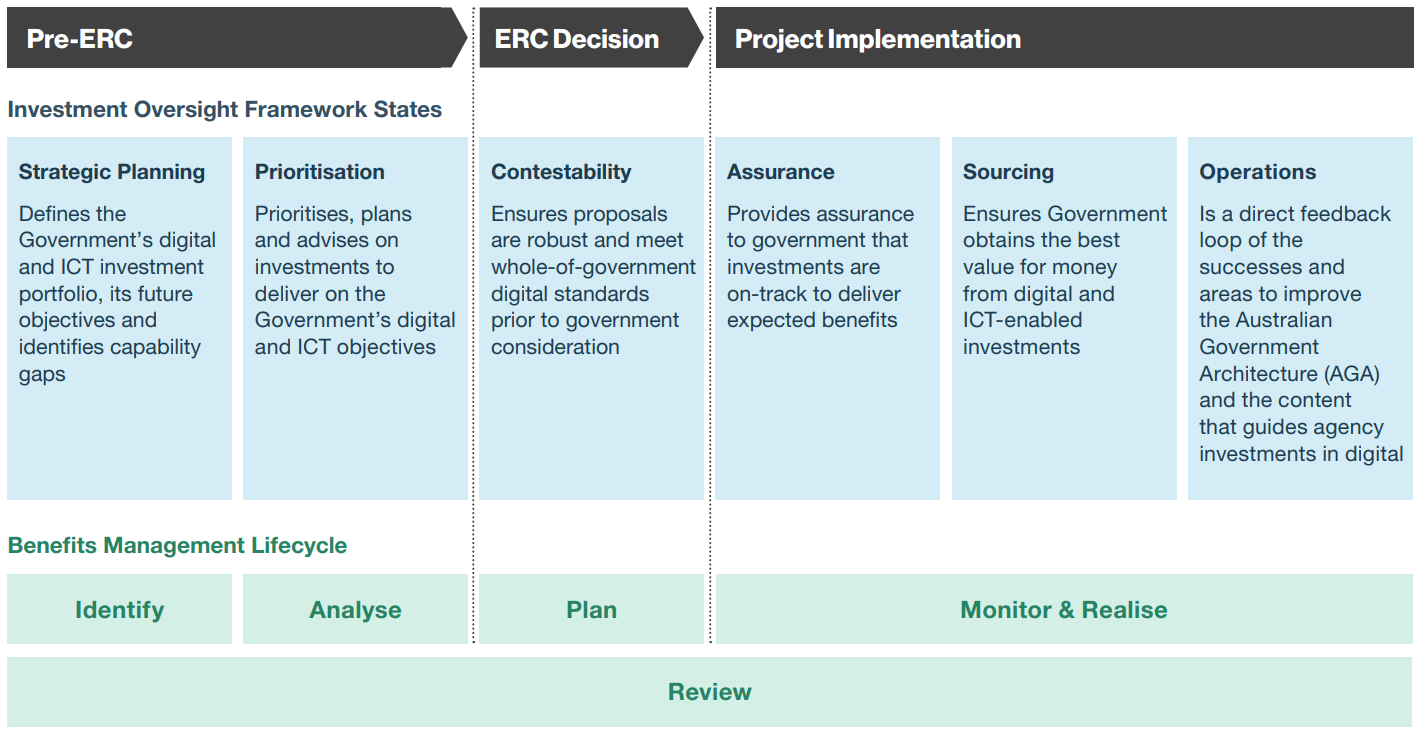Process
The benefits management lifecycle spans the life of a digital and ICT-enabled investment and beyond. The lifecycle comprises 5 key phases: Identify, Analyse, Plan, Monitor and Realise, and Review. While the lifecycle is represented as sequential, many activities are repeated throughout the lifecycle reflecting its iterative nature.

Stages of the lifecycle
Identify
In the Identify stage, potential benefits are identified and prioritised. The objectives are:
- Understand the issues and opportunities that are driving the need for change.
- Consider these drivers together with strategic objectives to guide the identification of potential benefits and disbenefits.
- Prioritise the most achievable benefits and quantify them (consider applying the 80:20 rule).
- Map the benefit dependencies that enable benefits realisation.
- Capture baseline levels of current performance.
- Identify and validate benefits with potential Benefit Owners.
Analyse
In the Analyse stage, benefit forecasts are refined, benefits are valued, and options are assessed.
The objectives are:
- Further refine, validate and challenge benefit forecasts, and document any associated assumptions.
- Value benefits in monetary terms where possible to provide a consistent basis for assessing different options.
- Appraise the different options through techniques such as cost-benefit, cost-effectiveness, and multi-criteria analysis.
- Analyse benefit confidence and conduct sensitivity analysis.
Plan
In the Plan stage, mechanisms are put in place to document, realise and monitor benefits.
The objectives are:
- Further refine, validate and challenge benefit forecasts. Document associated assumptions.
- Confirm Benefit Owners, finalise roles, responsibilities, and governance arrangements.
- Record benefit dependencies and milestones in project plans.
- Seek out, identify and capture emergent benefits.
- Plan stakeholder engagement and communication.
- Document benefits management planning in benefit maps, benefit profiles, and benefits realisation plans.
Note: Benefits management documents, like business cases, capture ‘point-in-time’ requirements. However, these documents are live artefacts that must be regularly updated to reflect change throughout the investment lifecycle.
Monitor and realise
In the Monitor and Realise stage, benefits management remains central to investment delivery.
The objectives are:
- Seek out, identify and capture emergent benefits.
- Manage benefit variations via governance arrangements and change control mechanisms.
- Report periodically on benefits realisation progress and take corrective action where required.
- Implement business change management processes to ensure successful benefits realisation. This includes training and development, business process re-engineering, and/or staff redeployment.
- Adopt behavioural change strategies to maximise benefits.
- Formally handover responsibility for benefits realisation, optimisation and monitoring to Benefit Owners at project closure.
Review
The Review stage assesses the degree to which benefits are, or will be realised. Review occurs before, during, and after investment completion.
The objectives are:
- Conduct internal and independent reviews at key project and benefits management lifecycle milestones, including project stage gates, to assess the progress, delivery risk and realisation of benefits.
- Capture anecdotes and success stories that demonstrate success of the investment.
- Capture lessons learned and share with future investments.
- Continue to monitor and report on benefits realisation.

